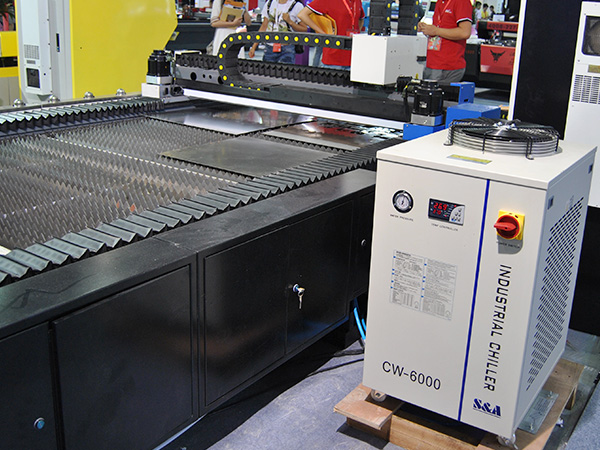Extremely sensitive to the temperature, the laser engraving machine will generate high-temperature heat during work and needs temperature control through the water chiller. You can choose a laser chiller according to the power, cooling capacity, heat source, lift and other parameters of the laser engraving machine.
What are laser engraving machines and their equipped industrial water chillers?
The processing principle of the laser engraving machines: based on CNC technology, the laser beam of energy is projected onto the surface of the material, using the thermal effect generated by the laser to produce a clear pattern on the surface of the material. Physical denaturation of the processed material by instantaneous melting and vaporization under laser engraving irradiation, thus achieving the processing purpose.
According to the power, it can be classified into two types: high-powered and low-powered laser engraving machines. Low-powered laser engraving machines, also known as laser marking machines, can be used to mark or engrave on metal and non-metal material surfaces, mostly used for marking company information, bar codes, QR codes, logos, etc. It is featured with high precision, exquisite effect and high efficiency. The high-powered laser engraving machine is widely used for cutting, deep engraving, etc. while the low-powered engraving machine has difficulty treating some materials. But low-powered laser engraving machines will not cause any physical damage to the material, widely used in some fine industries.
Compared to traditional mechanical engraving, the advantages of laser engraving are: 1. The engraved words without wearing and carving marks on its smooth and flat surface. 2. More accurate, with a precision of up to 0.02mm. 3. Environmental friendly, material-saving, safe and reliable. 4. High-speed engraving according to the output pattern. 5. Low cost and no processing quantity limit.
What kind of industrial chiller does the engraving machine need to be equipped with? You can choose a laser chiller according to the power, cooling capacity, heat source, lift and other parameters of the laser engraving machine. For details, please refer to Chiller Selection Guide.
The purpose of equipping the water chiller for the laser engraving machine: extremely sensitive to the temperature, the laser generator will generate high-temperature heat when working, so it needs temperature control through the water chiller, which helps the machine maintain a stable output optical power and beam quality, free of thermal deformation, thus prolonging the laser machine's service life and engraving precision.
After numerous tests before delivery, S&A chiller, with its temperature precision of ±0.1℃, is suitable for laser machines with high demand for temperature control accuracy. With annual sales of 100,000 units and 2 years warranty, our water chillers are well-trusted by clients.

We're here for you when you need us.
Please complete the form to contact us, and we'll be happy to help you.









































































































